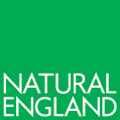Nature Improvement Areas: about the programme
Updated 20 January 2016
Applies to England
Aims of NIAs
Nature Improvement Areas (NIA) were established to create joined up and resilient ecological networks at a landscape scale.
They are run by partnerships of local authorities, local communities and landowners, the private sector and conservation organisations with funding provided by the Department for the Environment, Food and Rural Affairs (Defra) and Natural England
The 12 winning NIA projects were chosen after a competitive process announced in the Natural Environment White Paper.
These are areas that have:
- opportunities to establish and improve ecological networks by enlarging, enhancing and connecting existing wildlife sites and creating new sites
- a shared vision for the natural environment among a wide partnership of local people, including statutory and voluntary sectors
- surrounding land that can be better integrated with valued landscapes by restoring wildlife habitats and support natural processes adapt to climate change impacts
- benefits to urban areas and communities, with, where appropriate, ecological networks extending into urban areas
- ‘win-win’ opportunities that offer multiple benefits, such as for:
- the water environment and Water Framework Directive objectives
- flood and coastal erosion risk management
- the low-carbon economy
- opportunities to inspire people through an enhanced experience of the natural environment
All 12 NIAs have the main components of an ecological network. These are:
- core areas, especially existing wildlife sites (eg national nature reserves, sites of special scientific interest, local nature reserves)
- habitat corridors and ‘stepping stones’ to allow species to move around the area
- restoration areas, with the potential to create priority habitats which may become further core areas
- buffer zones to reduce pressures on core areas
- surrounding land that is managed in a wildlife friendly way eg for sustainable food production
The 12 NIA projects started on 1 April 2012 and the funding ended on 31 March 2015.
See NIA: locations and progress for information about each NIA.
In addition to the 12 NIAs, local partnerships and local planning authorities can identify and agree where locally determined NIAs can be set up.
Monitoring and evaluation
All 12 NIAs are required to carry out monitoring and evaluation of their projects to:
- assess progress towards achieving individual NIA aims and allow flexible management
- share knowledge and learn from the initial 12 NIAs
- create an evidence base for the future
- show the contribution of the 12 NIAs towards national and international policy commitments and targets
- show the success of NIAs
The NIAs produce annual monitoring and evaluation reports on agreed outputs and activities using the monitoring and evaluation framework. The framework is based around 4 themes:
- biodiversity
- ecosystem services
- social and economic
- partnership working
See the Monitoring and evaluation of Nature Improvement Areas documents in Natural England’s publications catalogue for more information.
The final report on the programme is also available.
Improving monitoring and evaluation
Phase 1 of the monitoring and evaluation development took place in 2012 with the establishment of the integrated monitoring and evaluation framework supported by an online reporting tool.
Phase 2 of monitoring and evaluation will take place between February 2013 and November 2015. Collingwood Environmental Planning, with partners GeoData Institute and Cascade Consulting, have been commissioned by Defra and Natural England to:
- further develop the online reporting tool and monitoring and evaluation indicators
- devise and implement an evaluation methodology
This allows evidence to be coordinated and shared with other related initiatives and assists the evaluation of the 12 NIAs after each year of the project. See the phase 2 project summary in The National Archives for more information.
Annual reports are published following each of the 3 years of the funding programme.
Year 3 (2012 to 2015) published in January 2016.
Year 2 (2013 to 2014):
- NIA monitoring and evaluation year 2 progress report: executive summary
- NIA monitoring and evaluation year 2 progress report
- NIA monitoring and evaluation year 2 progress report annex: literature review
Year 1 (2012 to 2013):
Locally determined NIAs
In addition to the 12 national NIAs, local nature partnerships and local planning authorities can identify and agree where locally determined NIAs can be set up.
Locally determined NIAs are encouraged to apply the criteria, the monitoring and evaluation framework and lessons learnt from the 12 initial NIAs to assist their development and progress.
For more information see the criteria for locally determined NIAs.
NIA best practice
Documents from the NIA best practice network and events are available in Natural England’s publications catalogue.

